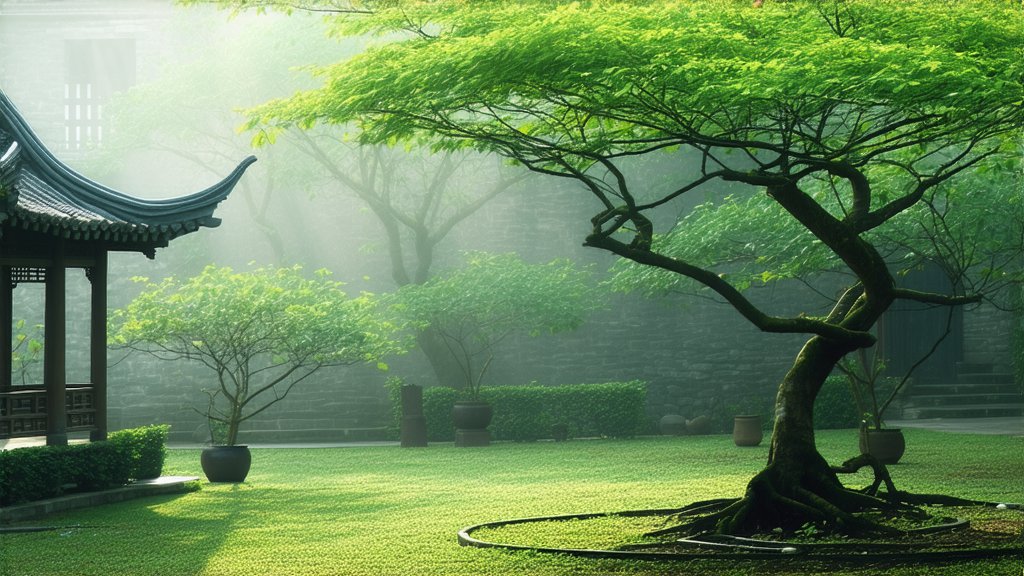
In the vast and diverse landscape of Chinese tea culture, Baihao Yinzhen stands as a testament to the artistry and finesse of traditional tea-making. This exquisite variety of white tea, hailing from the pristine mountains of Fujian Province, is renowned for its ethereal beauty, delicate flavor profile, and numerous health benefits. As we embark on this journey to explore the depths of Baihao Yinzhen, we will delve into its rich history, varieties, meticulous production process, and the nuanced art of its appreciation.
A Glimpse into History
The origins of Baihao Yinzhen can be traced back to the early Qing Dynasty (1644-1912), during which time it was discovered in the Fuding area of Fujian Province. The name "Baihao Yinzhen" translates to "Silver Needle White Hair," a poetic description of its appearance. The tea gained prominence due to its minimal processing, which preserves its natural flavors and nutritional properties. Over centuries, Baihao Yinzhen has evolved but remains a cherished gem among tea connoisseurs worldwide.
Varieties of Baihao Yinzhen
While Baihao Yinzhen is often considered a singular entity, it encompasses various subtypes, each with unique characteristics:
-
Bai Mu Dan (White Peony): This variety features a blend of downy silver buds and young green leaves, offering a balanced flavor profile with floral notes and a hint of sweetness.
-
Gong Mei (Tribute Eyebrow): Named after its resemblance to finely shaped eyebrows, Gong Mei consists primarily of mature leaves and buds, providing a robust yet refined taste with earthy undertones.
-
Shou Mei (Long Life Eyebrow): Similar to Gong Mei but with a more extended leaf and bud combination, Shou Mei delivers a fuller body and a slightly bolder flavor, making it a favorite among those who prefer a heartier white tea experience.
The Art of Crafting Baihao Yinzhen
The production of Baihao Yinzhen is an intricate dance between nature and human skill, adhering to age-old techniques that ensure the tea's purity and quality. Here’s a closer look at the meticulous steps involved:
-
Hand-Picking: The process begins with the selective hand-picking of the tea plant's topmost buds and youngest leaves. This labor-intensive method ensures that only the finest, most tender parts of the plant are harvested, contributing to the tea's delicate texture and flavor.
-
Withering: The freshly picked leaves and buds are spread out thinly on bamboo mats or trays and left to wither under the gentle sun or in well-ventilated rooms. This step allows the moisture content to decrease gradually, softening the leaves and initiating the enzymatic reactions that contribute to the tea's unique aroma.
-
Drying: After withering, the tea undergoes a final drying phase, either through sun drying or low-temperature oven drying. This step further reduces moisture levels, ensuring the tea's longevity and preserving its subtle flavors.
-
Sorting and Packaging: Once dried, the tea is carefully sorted to remove any imperfect leaves or stems, then packaged in airtight containers to maintain freshness until it reaches the consumer.
Appreciating Baihao Yinzhen: A Sensory Experience
To truly appreciate Baihao Yinzhen, one must engage all senses in a mindful tasting ritual:
-
Visual Appreciation: Observe the dry leaves, noting their silvery-white fuzz and slender shape. Upon steeping, watch how they unfurl gracefully in the water, revealing their vibrant green hue.
-
Aromatic Evaluation: Inhale deeply before sipping, capturing the tea's subtle fragrance. Depending on the variety, you may detect floral notes, fruity hints, or a gentle earthiness.
-
Flavor Profile: Take a slow, deliberate sip, allowing the tea to coat your palate. Note the initial sweetness, followed by a silky smoothness and a lingering finish that varies from light and crisp to more complex, earthy tones, depending on the specific type of Baihao Yinzhen being enjoyed.
-
Texture and Mouthfeel: Pay attention to the tea's texture in your mouth. A high-quality Baihao Yinzhen should feel velvety and almost creamy, a testament to its minimal processing and careful handling.
-
Aftertaste: Finally, relish the aftertaste, which should be clean, refreshing, and indicative of the tea's purity and craftsmanship.
Health Benefits and Cultural Significance
Beyond its aesthetic and sensory pleasures, Baihao Yinzhen boasts an array of health benefits. Rich in antioxidants, catechins, polyphenols, it supports immune function, aids digestion, promotes cardiovascular health, and offers anti-aging properties. Additionally, Baihao Yinzhen is often celebrated in Chinese culture for its calming effects, promoting relaxation and mental clarity.
In conclusion, Baihao Yinzhen embodies the essence of Chinese tea culture—a harmonious blend of tradition, nature, and artistry. From its historical roots in Fujian Province to its meticulous production process and nuanced tasting experience, Baihao Yinzhen invites us to slow down, savor life's simple pleasures, and connect with the ancient wisdom embedded within each delicate leaf and bud. As we raise our cups to this enigmatic brew, we partake in a timeless tradition that transcends borders and cultures, uniting us in our shared appreciation for the beauty of tea.